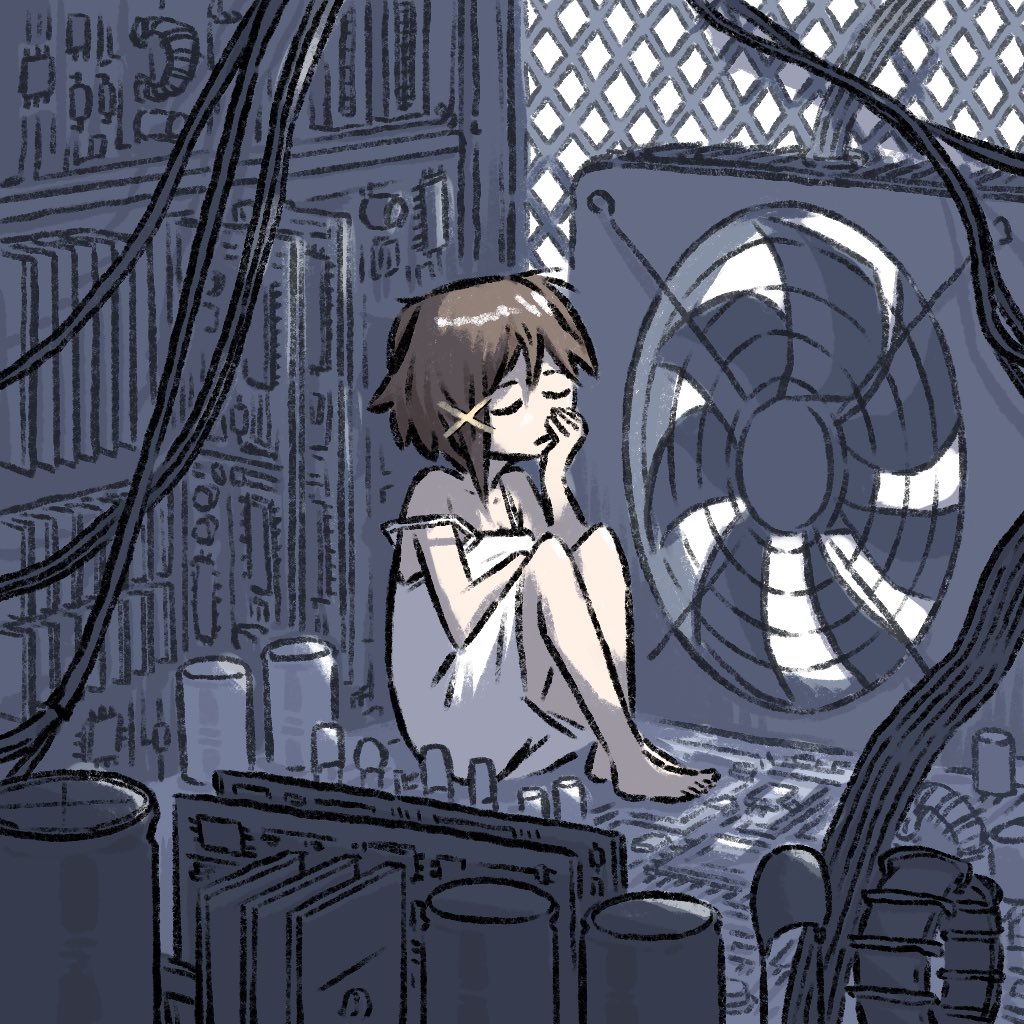I recently made a post discussing my move to Linux on Fedora, and it’s been going great. But today I think I have now become truly part of this community. I ran a command that borked my bootloader and had to do a fresh install. Learned my lesson with modifying the bootloader without first doing thorough investigation lol.
Fortunately I kept my /home on its own partition, so this shouldn’t be too bad to get back up and running as desired.
I ran a command that borked my bootloader and had to do a fresh install.
Just wait until you learn the powers of chroot :)
Few days ago I downgraded glibc(I’m dumdum) because it was recommended in a reddit thread for a problem I was having. I couldn’t even chroot. Fortunately I could update with pacman --root
This is the way
Borked your bootloader already? You’re a true Linux user lol. You’ll eventually learn to not do that (and back up regularly).
Good choice with Fedora! I love dnf and the choices Fedora makes overall.
Timeshift for backups is a godsend in these situations
OP should just know that TimeShift doesn’t work on Fedora Workstation without some tinkering.
Thats good to know because Fedora seems to be where im heading when i make the switch as well.
borked my bootloader and had to do a fresh install
That’s where you’re wrong :)
You’re right. I spent a few hours trying to fix it before giving up and determined that reinstalling would be quicker lol
Before you can fix a bootloader, you first need to learn how to install and set up a bootloader. I think most people learn that part when they try Arch
Do it with Debian Unstable
Breaking your install within a few days is the rite of passage
Congratulations soldier! You’re one of us now.
I’ve messed up my system so many times over the years that now I think I secretly get excited when it accidentally happens. Maybe I’m a masochist, but I actually enjoy trying to understand what went wrong. A USB stick with a light weight Linux distro and chroot you can usually get back in there and look around at the damage.
I think you may need help… I bid you good luck on your recovery :P
I’m on fedora silverblue and that won’t ever happen again to me
Still possible to break your bootloader.
Friendo, I think once you understand exactly what an OS is, you’ll have fewer problems. An OS is just a layer on top of hardware with a lot of scripts and tools that enable that hardware to do things like move files, show graphics, and send audio in a desktop environment. Never issue a root or sudo command unless you understand exactly what it’s doing. Following this one simple rule will save you a lot of trouble, same as any Windows machine.
This is reasonably valid. I think Windows makes it a bit harder to do real damage to your system, so I’m used to that. I also have borked installs in VMs before, but that’s never mattered because spinning up a new one takes no time. Definitely a valuable lesson to do more research before running commands, especially as sudo
Also, once your install is in a state you like, create a backup with CloneZilla.
Nah. This is old school thought. Use an immutable distro if this is your concern, and keep all your files on a NAS, or something else that can replay your files. Local images of your entire filesystem isn’t needed anymore.
Neither an immutable distro nor a NAS is a replacement for backups.
Some people are lucky enough to never learn that backups are vital. Good luck to you in the future!They are two different things.
A Clone of an OS install is not needed anymore, for a jillion reasons.
Personal files do not relate to that.
Perhaps you don’t understand how these are intended to work?
A Clone of an OS install is not needed anymore, for a jillion reasons.
If my SSD decides to suddenly quit, I can get back all my personal files and configs, plus all the software I had installed with all configurations, configured repositories, user rights and group memberships, GUI customizations, system-wide fonts, .desktop-files, root .bashrc, self-compiled software, etc. etc. by popping in a new SSD and
dding my full disk image backup to it with one terminal command.I fail to see how that is not a nice thing to have even today, or how I would get back to the previous state just as fast without it.
Heyha ! Read about dd on makeuseof after reading your post, to see how it works.
Restoring from an image seems exactly what I was looking for as a full backup restore.
However this kind of 1 command backup isn’t going to work on databases (mariadb, mysql…). How should I procede with my home directory where all my containers live and most of them having running databases?
Does it work with logical volumes? Is it possible to copy evrything except /home of the logical volumes?
For special use cases like that, dd isn’t the right tool.
In my first few weeks of linux I screwed up mounting a hard drive and my pc wouldn’t boot past grub. 4x different times I tried and each time I broke it. Then a year later I revisted mounting the drive and it went smoothly.
Time heals all wounds :P
When you get more advanced you can use a distro like System Rescue to fix your bootloader instead of having to reinstall everything
Trial-and-error is a beautiful thing, isn’t it?
t. Had to reinstall GNU/Linux several times through the course of months while trying new stuff and/or trying to improve the current ones.
I love the enthusiasm. Enjoy your journey. Feel free to reach out to me directly if you need help.
Thank you for the offer. I hope I never need to take advantage of it lol
Good luck. 🤣
One of us! One of us!
Although I think having to fix a borked bootloader is a good bit of experience, it’s probably not something you are always going to want to spend time on. I have used boot-repair only once, but it was like magic. Just throwing it out there for your future use and a general recommendation. :)
Keeping
/homeseparate is a good call. I can also recommend backups to a different system. Also test those backups.Playing with things can be fun if that is what you enjoy. Being careful is good but the best way to avoid serious issues is being able to recover from the worst case.
Why do you advocate for keeping /home separate?
I personally don’t do it because the more partitions you have, the more often you need to fiddle around in GParted when one partition gets full. This is also why I use swap files instead of swap partitions
As far as I can tell, unless you distro-hop, separating /home doesn’t have any advantages. Even then, sharing one /home directory between multiple desktop environments can cause some problems
I agree with making and testing backups, though. My current strategy is to back everything up to a 4.2 TiB ZFS pool with daily snapshots on my LAN, and back up the most important data on that to the cloud
Not the person above, but if it is an issue you ever run into you are doing it “wrong”. Not really, but let me explain.
Having it on a separate partition has a few advantages like different mount flags (e.g. noexec), easier backup management (especially snapshots) and some other benefits like using your home for a new installation (like OP wants to) or it prevents some critical failures in case you accidentally fill it up (e.g. partial writes or services cannot start).
I often cannot decide on specific mount sizes either, because requirements may change depending on what you do. Hence I would just stick with some reasonable defaults for the installation and use some form of volume manager instead. If you want to use ext4, xfs etc I would recommend using LVM as it gives you a lot of freedom (resizing of volumes, snapshots and adding additional drives, mixed RAID modes etc) or there are btrfs, zfs or bcachefs to name the most common file systems which implement their own idea of storage pools and volumes.
Never should you need to resize a partition, there are more modern approaches. Create a single partition (+ a small EFI partition somewhere) and never bother with partitions ever again. The (performance) overhead is negligible and it gives so many additional benefits I didn’t even mention. Your complaint is a solved problem.
I don’t think it is critical to keep
/homeseparate but if you need to reinstall it is really nice. You can reset the OS without touching your data or user-level configs. Either for the same distro because you fiddled around and broke it or another one for distro-hopping. It also makes encrypting it easy, although full-disk encryption is getting so easy that it probably isn’t an issue. Good backups also mitigate this, although the recovery will be slower than just reinstalling while leaving your existing home there.To be honest I don’t actually keep home separate anymore. But that is mostly because I trust NixOS enough that I know I will never need to reinstall. I can always roll back or worst case install over top of the existing install from a live USB.
Overall I would say that the cost of doing so is fairly small as well. Unless you are running a lot of system services data outside of
/homeis usually fairly limited. Although I agree that getting the partition sizes wrong can be frustrating.









